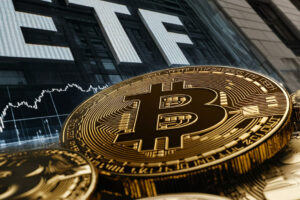
VanEck’s Bitcoin ETF HODL experienced an astonishing 14x surge in trading volume on Feb. 20, catching the attention of investors and analysts across the financial sector.
The ETF, one of the ten spot bitcoin exchange-traded funds (ETFs) available in the US, traded over $400 million in volume, a significant leap from its daily average of $17 million over the past five weeks.
As of Feb. 20, HODL holds nearly $200 million worth of BTC.
The surge came just ahead of VanEck’s announcement to reduce its offering fees from 0.25% to 0.20% on Feb. 21.
Speculation around origin
The unexpected volume spike has ignited widespread discussion, with various theories circulating within the crypto and financial communities.
Some speculate that the surge could be attributed to a specific endorsement by a social media influencer. In contrast, others consider it a natural evolution of retail investors’ growing interest in crypto investments.
Bloomberg Intelligence analyst Eric Balchunas suggested the volume increase might be attributed to individual traders rather than institutional investors. He noted that the ETF recorded 32,000 individual trades, a stark increase from the 500 trades seen on the preceding Friday.
According to Balchunas:
“Given how sudden and explosive the increase in the number of trades was, I’m wondering if some Reddit or TikTok influencer recommended them to their followers. Feels retail army-ish.”
Further, discussions highlight a debate on whether the surge in ETF trading volume represents a shift towards more traditional investment strategies among retail investors or if it reflects a temporary trend influenced by external factors.
Some argue that retail investors traditionally interested in direct crypto investments have been participating in spot markets and would not be inclined toward ETFs due to management fees. This suggests that other factors, including speculative trading or institutional interest, could drive the recent surge in trading volume.
Algo-driven surge?
Further analysis by Dave Nadig suggested that the unusual trading patterns could be the work of algorithmic trading or perhaps even bots.
These automated systems can execute trades at high speeds, placing large bids just below the current market price only to withdraw them moments later without completing any transactions. This tactic, known as “headfakes” or “algo cliffs,” suggests a strategic attempt to capitalize on short-term trading opportunities.
The quick appearance and disappearance of large orders below the market price, without leading to actual transactions, suggest that these are not genuine attempts to buy but efforts to influence the market’s direction or trigger reactions from other market participants.
This activity is characteristic of sophisticated trading algorithms or bots designed to operate within milliseconds, far faster than a human trader could manage.
Such tactics might aim to create artificial market conditions that benefit the operators of these algorithms, either by making the market move in a desired direction or by taking advantage of the resulting price volatility.
















